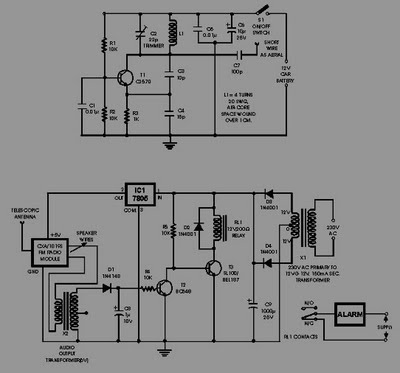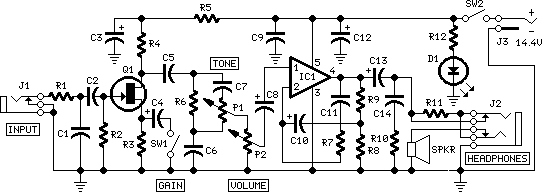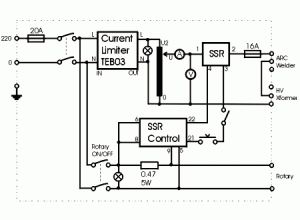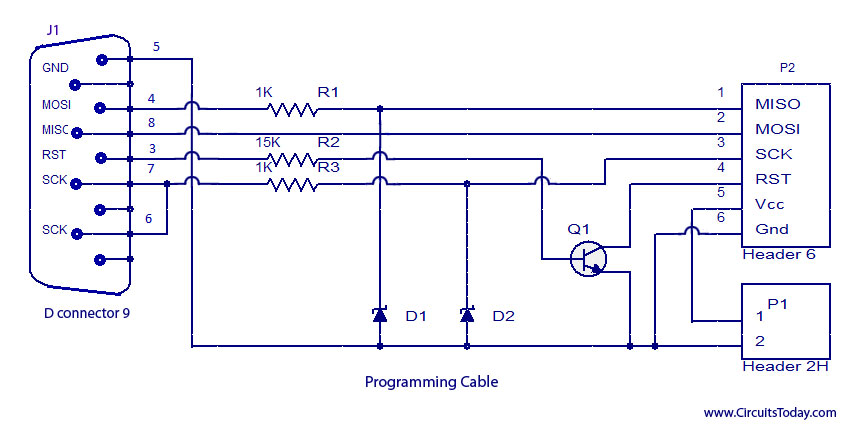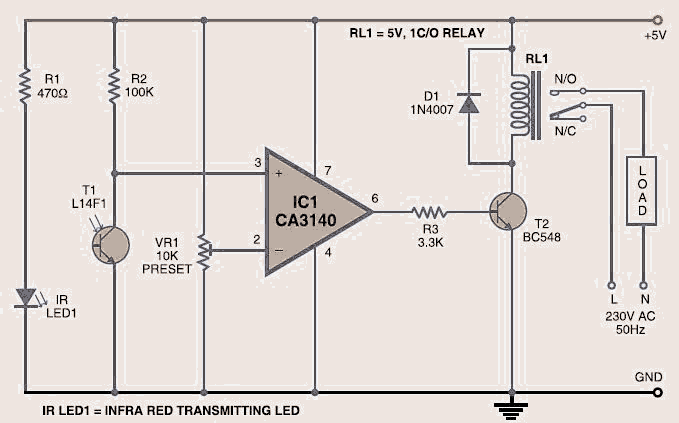
bass and treble control without any ic and transistor

This low-cost bass treble circuit consists of capacitors, resistors, and two potentiometers for bass and treble control. The circuit can be assembled without a veroboard, as the components can be soldered directly due to the simplicity of the design. It features only two-pin components, making it accessible for beginner-level hobbyists to understand and construct. However, there are some drawbacks to this circuit that should be noted. Since it does not require an external power supply, the output power is significantly lower than the input power, resulting in a decrease in volume. Additionally, the treble control does not function linearly, causing a substantial increase in treble at the extreme end of the potentiometer.
This bass treble circuit is designed to enhance audio signals by allowing users to adjust the bass and treble frequencies to their preference. The primary components include resistors and capacitors that form a passive equalizer network. The two potentiometers, designated for bass and treble control, allow for fine-tuning of the audio output. The bass control typically utilizes a low-pass filter configuration, which enables the user to boost lower frequencies, enhancing the depth and richness of the sound. Conversely, the treble control often employs a high-pass filter, which accentuates higher frequencies, contributing to clarity and brightness in the audio output.
The simplicity of the circuit is one of its key features, as it does not require complex components or extensive soldering techniques. This makes it an ideal project for beginners who are learning about audio electronics. The absence of a veroboard or PCB allows for a more hands-on approach, where hobbyists can directly engage with the components.
However, the circuit's reliance on passive components means that it may not deliver the same output power as more sophisticated active circuits that utilize operational amplifiers or dedicated power supplies. As a result, users may experience a lower volume level, which could be a limitation in certain applications. Furthermore, the non-linear behavior of the treble control may lead to an uneven response, where subtle adjustments in the potentiometer can result in significant changes in treble output, particularly at the extremes of the control range.
In summary, while this bass treble circuit offers an accessible introduction to audio electronics with its straightforward design and assembly, users should be aware of its limitations regarding output power and control linearity.This low cost bass treble circuit consists of some capacitors, resistors, and two T/C pot for BASS and TREBLE control. this circuit can be made without even a veroboard. You just solder components as this circuit network is not so complex. It has only two-pin parts. Let`s take a look at he circuit diagram. Nothing to say about it, as it is so simp le that a beginner level hobbyist can even understand and build this circuit. But there are some -ve points of this circuit which I must say, after giving you the circuit. As no external power supply, the O/P power is much lesser than I/P power, so volume decreases. The treble control doesn`t act as linear, it increases treble a lot in the end pot side 🔗 External reference
This bass treble circuit is designed to enhance audio signals by allowing users to adjust the bass and treble frequencies to their preference. The primary components include resistors and capacitors that form a passive equalizer network. The two potentiometers, designated for bass and treble control, allow for fine-tuning of the audio output. The bass control typically utilizes a low-pass filter configuration, which enables the user to boost lower frequencies, enhancing the depth and richness of the sound. Conversely, the treble control often employs a high-pass filter, which accentuates higher frequencies, contributing to clarity and brightness in the audio output.
The simplicity of the circuit is one of its key features, as it does not require complex components or extensive soldering techniques. This makes it an ideal project for beginners who are learning about audio electronics. The absence of a veroboard or PCB allows for a more hands-on approach, where hobbyists can directly engage with the components.
However, the circuit's reliance on passive components means that it may not deliver the same output power as more sophisticated active circuits that utilize operational amplifiers or dedicated power supplies. As a result, users may experience a lower volume level, which could be a limitation in certain applications. Furthermore, the non-linear behavior of the treble control may lead to an uneven response, where subtle adjustments in the potentiometer can result in significant changes in treble output, particularly at the extremes of the control range.
In summary, while this bass treble circuit offers an accessible introduction to audio electronics with its straightforward design and assembly, users should be aware of its limitations regarding output power and control linearity.This low cost bass treble circuit consists of some capacitors, resistors, and two T/C pot for BASS and TREBLE control. this circuit can be made without even a veroboard. You just solder components as this circuit network is not so complex. It has only two-pin parts. Let`s take a look at he circuit diagram. Nothing to say about it, as it is so simp le that a beginner level hobbyist can even understand and build this circuit. But there are some -ve points of this circuit which I must say, after giving you the circuit. As no external power supply, the O/P power is much lesser than I/P power, so volume decreases. The treble control doesn`t act as linear, it increases treble a lot in the end pot side 🔗 External reference
